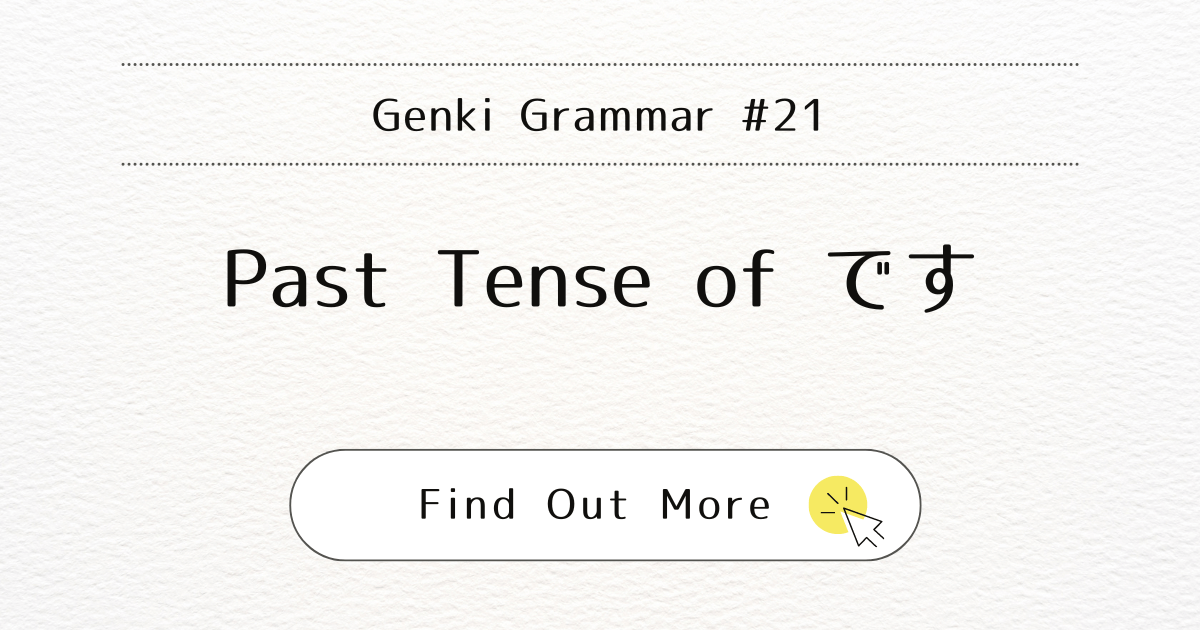
Introduction
Learning Japanese involves understanding various grammar points, and one essential aspect is the past tense of “です” (desu). Let’s dive into what it means, when to use it, and some helpful examples.
What It Means
In Japanese, “です” (desu) is a copula used to link the subject of a sentence with a predicate. To express the past tense, “です” (desu) changes to “でした” (deshita) in affirmative sentences and “じゃなかったです” (janakattadesu) in negative sentences.
When You Use It
You use the past tense of “です” (desu) when talking about something that happened in the past. This could be an event, a state, or a characteristic that was true before but not necessarily now.
Examples
Let’s look at some examples to see how the past tense of “です” (desu) is used:
Affirmative Past Tense: でした (deshita)
佐藤先生はABC大学の学生でした。
(Satou sensei wa ABC daigaku no gakusei deshita.)
Mr. Satou was a student at ABC University.
Negative Past Tense: じゃなかったです (janakattadesu)
あれはドイツの映画じゃなかったです。
(Are wa Doitsu no eiga janakatta desu.)
That was not a German movie.
Note
Just as with the present tense “じゃないです” (janaidesu), there’s a more conservative variant for the past tense: “じゃありませんでした” (jaarimasendeshita) instead of “じゃなかったです” (janakattadesu). In written communication, you might see “ではありませんでした” (dehaarimasendeshita), using the more formal and complete form of じゃ(ja).
Summary
Mastering the past tense of “です” (desu) is a fundamental step in learning Japanese. Remember:
- Affirmative Past Tense: です (desu) → でした (deshita)
- Negative Past Tense: じゃないです (janaidesu) → じゃなかったです (janakattadesu) (or じゃありませんでした (jaarimasendeshita) in formal contexts)
Conclusion
Understanding and using the past tense of “です” (desu) correctly will enhance your Japanese communication skills.



